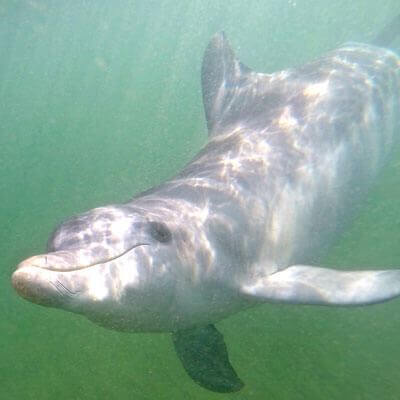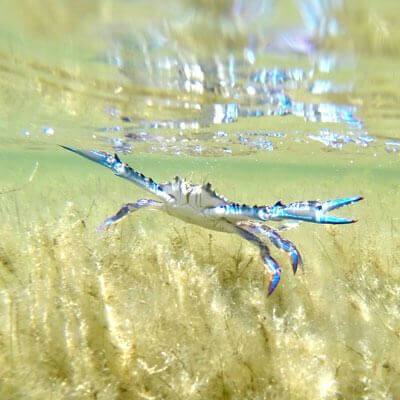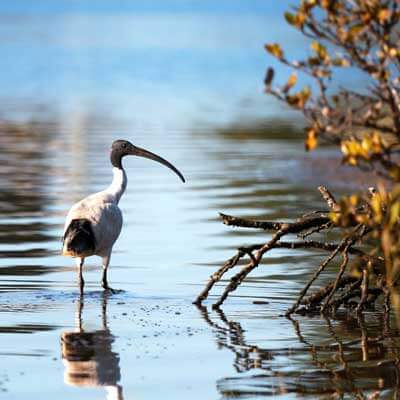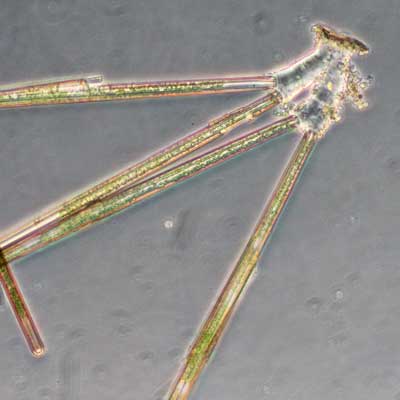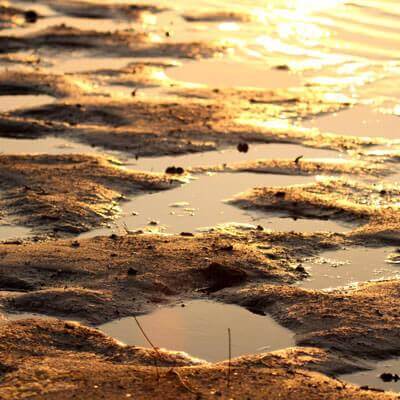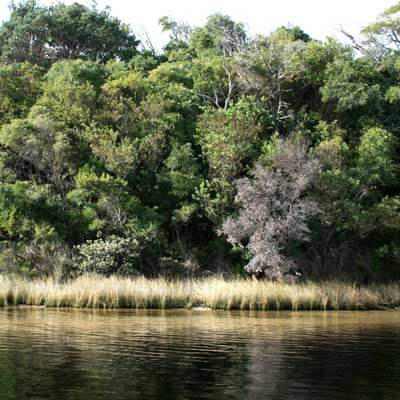Fringing vegetation
The diversity of the Leschenault Estuary’s fringing habitats have in the past been ranked as ‘the most significant’ along the south-western coast of the Swan Coastal Plain. In a survey conducted in 1989, ground-truthed aerial photography identified five distinct habitats around the estuary. The main factors influencing the composition and distribution of these habitats were distance from the shore, elevation, and water and sediment salinity. From the inter-tidal zone towards the land these included saltmarsh, rushes and sedges, mangroves, dune (or sandy rise) and forest habitats (see Table). The mangroves of the Leschenault Estuary (Avicennia marina) are particularly significant as they represent the most southerly occurrence of this species.
Significant losses and changes to the fringing habitats of the Leschenault Estuary have occurred within the last century. In a comparison of historical images between 1941 and 1989, an estimated 50% of the fringing habitat was lost because of clearing for urban and agricultural land uses and the dredging required for constructing the Bunbury Port. Areas most impacted by clearing include north of Buffalo Road, the eastern shoreline, Pelican Point and the harbour development at the southern end. Habitat disturbance has favoured the establishment of exotic species.
The composition and distribution of fringing habitats has been altered due to changes to environmental conditions such as water levels, drainage and groundwater interactions (increasing salinities) and sediment deposition. These changes include:
- rushes and sedges have encroached on areas less often inundated with water
- samphires have encroached on rushes and sedge habitats where salinity has increased
- fringing forest habitats have been lost due to increased salinty
- new saltmash has developed where shifting sands and deposition has occurred
- mangrove habitats has also slowly expanded and is thought to be linked to increases in salinity (augmented by some supplemental planting undertaken in the mid-2000s).
Characteristic habitat types and dominant species of vegetation fringing the Leschenault Estuary
| Habitats | Dominant species |
|---|---|
| Saltmarsh (samphire herbs) | Sarcocornia quinqueflora Suaeda australis Halosarcia spp. Frankenia pauciflora |
| Saltmarsh (rush and sedges) | Juncas krausii Baumea juncea |
| Mangrove | Avicennia marina |
| Estuarine fringing forest | Melaleuca cuticularis |
| Sandy rise vegetation (dunes) | Eucalyptus rudis Melaleuca rhaphiopylla Acacia saligna Jacksonia furcellata Acacia saligna |
| Freshwater fringing forest | Melaleuca rhaphiopylla Agonis flexuosa Casuarina obesa |


